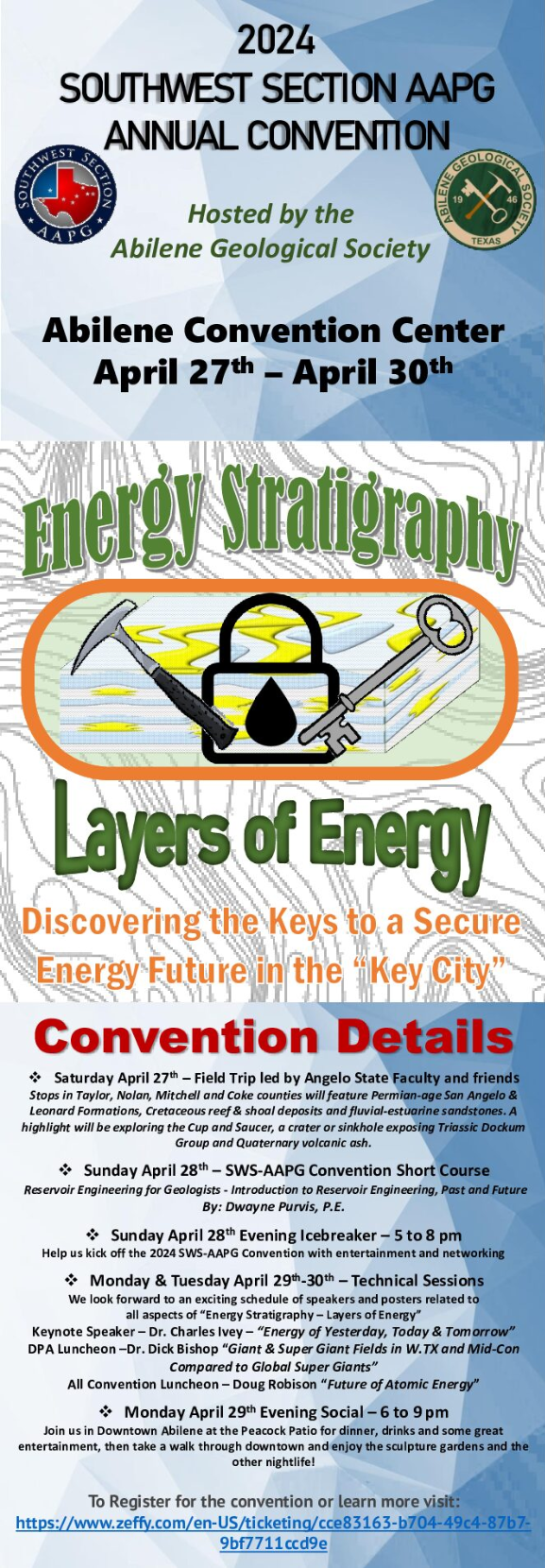
Speaker: Alton Brown
Company:
Semi-retired consulting geologist in Gatesville, Texas. BS: Baylor, 1974; PhD: Brown University, 1980. Worked with the ARCO research lab in Plano, Texas for 20 years.
Geology of Helium Accumulation
Helium can be a valuable byproduct of petroleum production. However, few natural gases have high (>0.3%) helium, and most high-helium gas accumulations are small. The formation of high-helium gases is reviewed to better understand settings where high helium gases may occur and potential pitfalls of evaluating new helium plays.
Helium in most natural gas is generated within the Earth’s crust, but its generation is quite different from that of hydrocarbons. Hydrocarbons have a concentrated source rock with thermally driven generation. Hydrocarbons are generated over a relatively short time, forming a buoyant phase that can migrate through the sedimentary basin to traps. In contrast, the helium source is dispersed and lean.
Generation is slow and continuous. A separate buoyant helium-rich phase does not form; helium either slowly accumulates in pore water or diffuses to the surface. Migrating gas extracts the helium from pore water. The helium concentration in the gas depends on the helium concentration in the water and gas- water interaction. Helium concentration in water depends on age of the water and helium supply rate from its source. Here are some general concepts useful for evaluating rank helium exploration:
- Helium can be generated in the crystalline crust and the sedimentary basin. The older the water, the more helium it acquires from either the underlying basement or surrounding sedimentary rocks. Gases migrating through older strata (with older pore water) will develop higher helium concentrations.
- A significant fraction of dissolved helium can be lost by diffusion through pore water to the surface. Diffusion seals (evaporites; tight carbonates) limit helium loss. Helium from the basement or deep strata accumulates below the diffusion seal, but the membrane seal responsible for trapping may be below the diffusion seal.
- Migrating gas extracts much of the helium from the pore water. The lower the pressure (shallower depth), the greater the fraction of helium that partitions into the gas. This causes somewhat higher helium concentrations in gas sampled at shallow depths. Helium concentrations in trace gases exsolved from shallow aquifers may be significantly higher than helium concentrations in gases at depth.
- Hydrocarbon generation dilutes helium concentrations. High helium gases are typically in low-generation petroleum systems or at the edges of prolific petroleum systems.
- Most helium is extracted from pore water by the first gas that interacts with the water. Helium becomes concentrated in the earliest migrated gas much more than expected from helium solubility in water. These high helium concentrations are preserved only in small traps near the end of gas migration routes.

Alton Brown
About Alton Brown
Alton Brown is a semi-retired consulting geologist in Gatesville, Texas. BS: Baylor, 1974; PhD: Brown University, 1980. He worked with the ARCO research lab in Plano, Texas for 20 years on carbonate sedimentology and diagenesis, reservoir quality prediction, basin analysis, petroleum migration, and inert gas geochemistry. He was near the top of the technical ladder when ARCO merged with BP in 2000. Since the merger, he has consulted on carbonates, reservoir modeling, basin analysis, and geochemistry of helium- and nitrogen-rich gases.
Members and guests are welcome. Meal prices are $15 with or without a reservation but reservations are encouraged!






